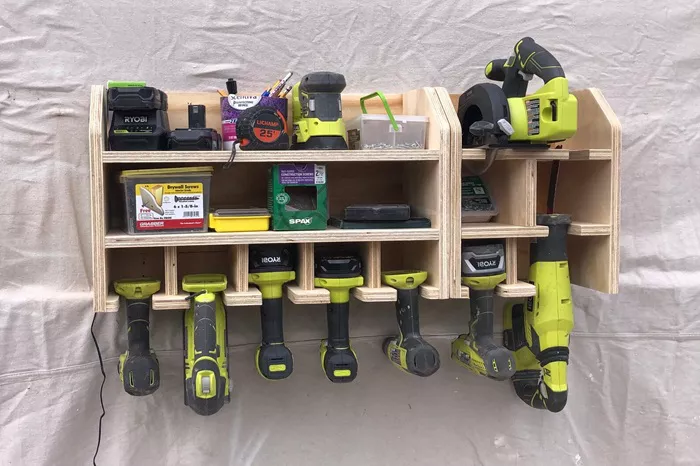Storing power tools in a shed is more than just keeping them off the ground. Proper storage ensures safety, prolongs tool life, and improves work efficiency. Power tools are a significant investment. If stored incorrectly, they can rust, degrade, or pose hazards. This article offers expert advice on how to store power tools in a shed using safe, efficient, and accessible methods. Whether you’re a DIY enthusiast or a professional, these tips will help you maximize the usability of your tools.
Planning Your Shed Layout
Assess the Space
Before installing storage systems, measure the interior of your shed. Identify available wall space, ceiling height, and floor area. Take into account the size and shape of each tool.
Define Tool Categories
Group tools by type: cutting tools, measuring devices, drills, grinders, and so on. This makes it easier to determine how much space is needed for each category and improves retrieval efficiency.
Choose the Right Storage Options
Wall-Mounted Pegboards
Pegboards are a classic solution. They save floor space and offer visibility. Add hooks and brackets designed for heavier power tools to ensure they remain secure. Use labels for quick identification.
Shelving Units
Metal or heavy-duty plastic shelves are ideal for storing toolboxes, cases, and batteries. Adjustable shelving lets you accommodate different tool sizes. Avoid wooden shelves unless treated against moisture.
Tool Chests and Cabinets
Lockable tool chests protect valuable tools from theft and dust. Use drawer organizers to separate bits, screws, and attachments. Cabinets can be mounted or standalone depending on shed size.
Protect Tools from Environmental Damage
Control Humidity
Humidity is a silent killer of power tools. Excess moisture causes rust and electrical damage. Use moisture absorbers or a dehumidifier if your shed is not climate controlled.
Use Airtight Storage Containers
Store small electronic or cordless tools in airtight plastic bins. This prevents exposure to dust, pests, and humidity. Label containers clearly for easy access.
Elevate from the Ground
Never store tools directly on the shed floor. Use pallets or risers to elevate them. This protects against flooding and moisture seepage.
Maintain Safety and Accessibility
Secure Heavy Items
Mount heavy tools like miter saws or bench grinders on stationary tables or racks. Ensure the mounts are bolted to structural supports. This reduces tip-over risks.
Keep Frequently Used Tools at Eye Level
Store your most-used items between hip and eye level. This minimizes bending or overreaching, which can cause injury. Rarely used tools can go on top shelves.
Label Everything
Clear labeling reduces time spent looking for tools. Use waterproof, fade-resistant labels for longevity.
Battery and Cordless Tool Storage
Store Batteries Separately
Always remove batteries from cordless tools before storing. Place them in a cool, dry box. Avoid extreme temperatures, which can reduce battery life or cause leaks.
Designate a Charging Station
Set up a wall-mounted or benchtop charging station with surge protection. Keep cords tidy with cable organizers. Never leave batteries charging unattended.
Tool Maintenance Before Storage
Clean After Each Use
Remove dirt, sawdust, and debris before putting tools away. Use compressed air or a soft cloth. Dirty tools corrode faster.
Apply Lubrication
Metal parts should be lightly oiled before long-term storage. This prevents rust and keeps mechanical components in working order.
Check for Wear and Damage
Inspect cords, blades, and fasteners regularly. Replace any frayed wires or dull components. It’s easier to fix issues before tools are packed away.
Seasonal and Long-Term Storage Tips
Use Desiccant Packs
Place silica gel packs in toolboxes and drawers. These absorb residual moisture and are ideal for long-term storage in non-climate-controlled sheds.
Cover Large Tools
Use breathable covers or cloths over stationary tools to keep dust away while preventing condensation buildup.
Rotate Tool Use
If storing tools for months, rotate them periodically. This keeps motors and parts from seizing up due to disuse.
Organize for Workflow Efficiency
Zone Your Shed
Divide the shed into zones—cutting, measuring, assembly, and cleaning. Store related tools together. This setup mimics a workshop and boosts productivity.
Create a Mobile Workbench
Build or buy a rolling workbench with drawers. It provides workspace and mobile storage. You can move it based on project needs.
Use Vertical and Overhead Space
Install ceiling racks for light but bulky items. Hang extension cords, clamps, or ladders from rafters or beams.
Implement a Tool Inventory System
Use a Digital Inventory App
Apps like Sortly or ToolWatch let you track tool locations, conditions, and maintenance history. This reduces loss and keeps storage organized.
Label with QR Codes
Attach QR-coded labels to toolboxes or shelves. Scanning the code reveals a list of stored items. Ideal for sheds with high tool volumes.
Security Measures
Lock Your Shed
Always use a weatherproof, heavy-duty padlock. Consider smart locks for remote access tracking. Thieves often target sheds due to tool value.
Install Motion Lighting and Cameras
Motion-detecting lights and security cameras deter theft. Many wireless models integrate with smartphones for real-time alerts.
Common Storage Mistakes to Avoid
Overcrowding
Overcrowded sheds are unsafe. Avoid stacking tools haphazardly. Leave walkways clear to reduce accidents.
Ignoring Ventilation
Poor airflow increases humidity and mold risk. Install vents or a solar-powered exhaust fan to improve ventilation.
Storing Flammable Items with Tools
Keep oils, fuels, and paint thinners in a separate fireproof cabinet. Mixing flammables with power tools increases fire risk.
Conclusion
Storing power tools in a shed requires strategy, but the rewards are great. A well-organized shed ensures tools are protected, easy to find, and safe to use. By planning your layout, using suitable storage systems, and maintaining tools regularly, you safeguard your investment and improve your workflow. Whether you’re storing tools short-term or over the winter, follow these best practices to get the most out of your shed and your tools.
Related topics:
- How to Safely Store Power Tools Outside
- Who Sells Porter Cable Power Tools?
- Who Manufactures Hercules Power Tools?

